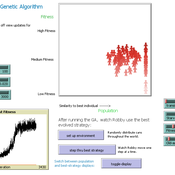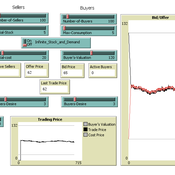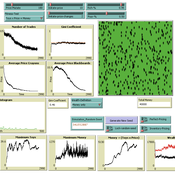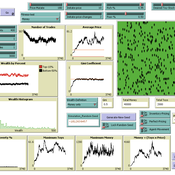
After being the economic development officer for the Little/Salmon Carmacks First Nation, Tim used all his spare time trying to determine a practical understanding of the events he witnessed. This led him to complexity, specifically human emergent behaviour and the evolutionary prerequisites present in human society. These prerequisites predicted many of the apparently immutable ‘modern problems’ in society. First, he tried disseminating the knowledge in popular book form, but that failed – three times. He decided to obtain PhD to make his ‘voice’ louder. He chose sociology, poorly as it turns out as he was told his research had ‘no academic value whatsoever’. After being forced out of University, he taught himself agent-based modelling to demonstrate his ideas and published his first peer-reviewed paper without affiliation while working as a warehouse labourer. Subsequently, he managed to interest Steve Keen in his ideas and his second attempt at a PhD succeeded. His most recent work involves understanding the basic forces generated by trade in a complex system. He is most interested in how the empirically present evolutionary prerequisites impact market patterns.
Research Interests
Economics, society, complexity, systems, ecosystem, thermodynamics, agent-based modelling, emergent behaviour, evolution.
Metaphoria 2019 eternal fitness test
Timothy Gooding | Published Sunday, February 24, 2019This is a modification of Metaphoria 2019 so that the eternal population is subjected to all the evolutionary forces as the mortal population.
Metaphoria 2019 eternal mutation
Timothy Gooding | Published Sunday, February 24, 2019This model is a modification of Metaphoria 2019, where the monetary system can be run with agents that do not die, but their characteristics are mutated as they are in the mortal population.
RobbyGA modified 2019
Timothy Gooding | Published Sunday, February 24, 2019This is a modification of the RobbyGA model by the Santa Fe Institute (see model Info tab for full information). The basic idea is that the GA has been changed to one where the agents have a set lifetime, anyone can reproduce with anyone, but where there is a user-set amount of ‘starvation’ that kills the agents that have a too low fitness.
Metaphoria 2019
Timothy Gooding | Published Sunday, February 24, 2019This model test the efficiency of the market economy in comparison with a hunter/gatherer economy. It also compares the model outcomes between a market economy when using eternal agents with one using mortal agents.
Double Auction
Timothy Gooding | Published Sunday, February 24, 2019This model reproduces the double auction experiments and explores the difference between short-term and long-term trading and pricing.
Three-Goods Trader 2019
Timothy Gooding | Published Sunday, February 24, 2019This is the Toy Trader but with two additional goods being traded.
Toy Trader 2019
Timothy Gooding | Published Sunday, February 24, 2019A model that strips trade down to its core to explore foundational emergent behaviour and evolution in trade systems.
Societal Simulator v203 fertility graph fix
Tim Gooding | Published Wednesday, November 26, 2014This is the same model as used in the article ‘Modelling Society’s Evolutionary Forces’ except the Fertility graph has been corrected. The Fertility graph was not used in the published article.
Societal Simulator v203
Tim Gooding | Published Tuesday, October 01, 2013 | Last modified Friday, November 28, 2014Designed to capture the evolutionary forces of global society.
Under development.





